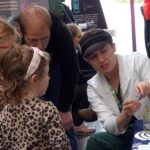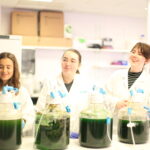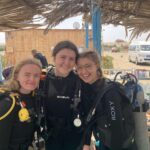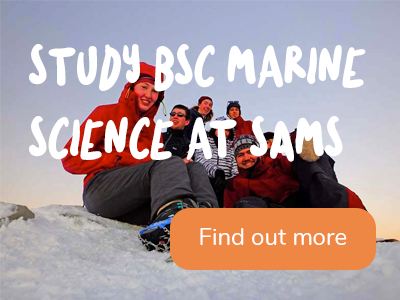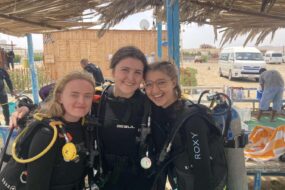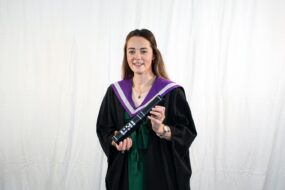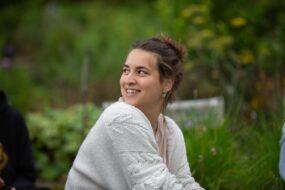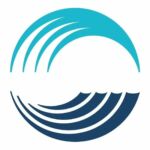Congratulations on starting your MRes in Marine Science at SAMS! Can you tell us more about your research project and where the inspiration came from?
My research project is based on a group of opportunistic green seaweeds called Ulva, which are known for forming large mats on the surfaces of nutrient rich bodies of water such as in wastewater. My research in particular focuses on the nutritional preferences of a species of Ulva seaweed to understand what environments it may thrive in. The reason I am doing this project is because I hold a strong interest in algal blooms and eutrophication. I have always been fascinated by plants and algae, and being able to study their growth is interesting and fun for me. In addition, I want to help conserve our marine environments – preventing harmful algal blooms can only happen if we understand how they form in the first place.
What impact do you hope your research will make?
This will hopefully give scientists the information necessary to come up with ways to prevent blooms that might be harmful, as well as ways to utilise the nutrient uptake abilities of Ulva species to clean up water and create biochemical products that could benefit human populations and communities. When algal blooms become too dense, they block sunlight from reaching below them. They also use up all the nutrients in the water in the area. As such, the creatures that live under them can suffocate and die – this is particularly bad for more fragile species which cannot tolerate a wide variety of conditions! Rotting Ulva blooms are also bad for humans as the gas released from their decomposition is toxic to us. By researching the nutritional preferences of this group of seaweeds, I hope I can aid the efforts to prevent these events from occurring.
What inspired you to pursue marine science and what led you specifically to SAMS, UHI for your MRes studies?
When I began studying biology at university, I initially wanted to be a genetics researcher working in human medicine. However, when I did a marine field course as part of a module I took out of curiosity in my third year, I was exposed to marine science for the first time and instantly fell in love with the subject. I continued with marine science from there, doing bivalve (seashell) taxonomy for my final year dissertation. I knew I wanted to continue down an academic path, so I went looking for marine science Masters courses. I came for an interview at SAMS and was amazed by the facilities – as well as how accessible the buildings were (I am a mobility aid user)! That solidified the SAMS UHI MRes Marine Science course as my top choice, and now I’m here!
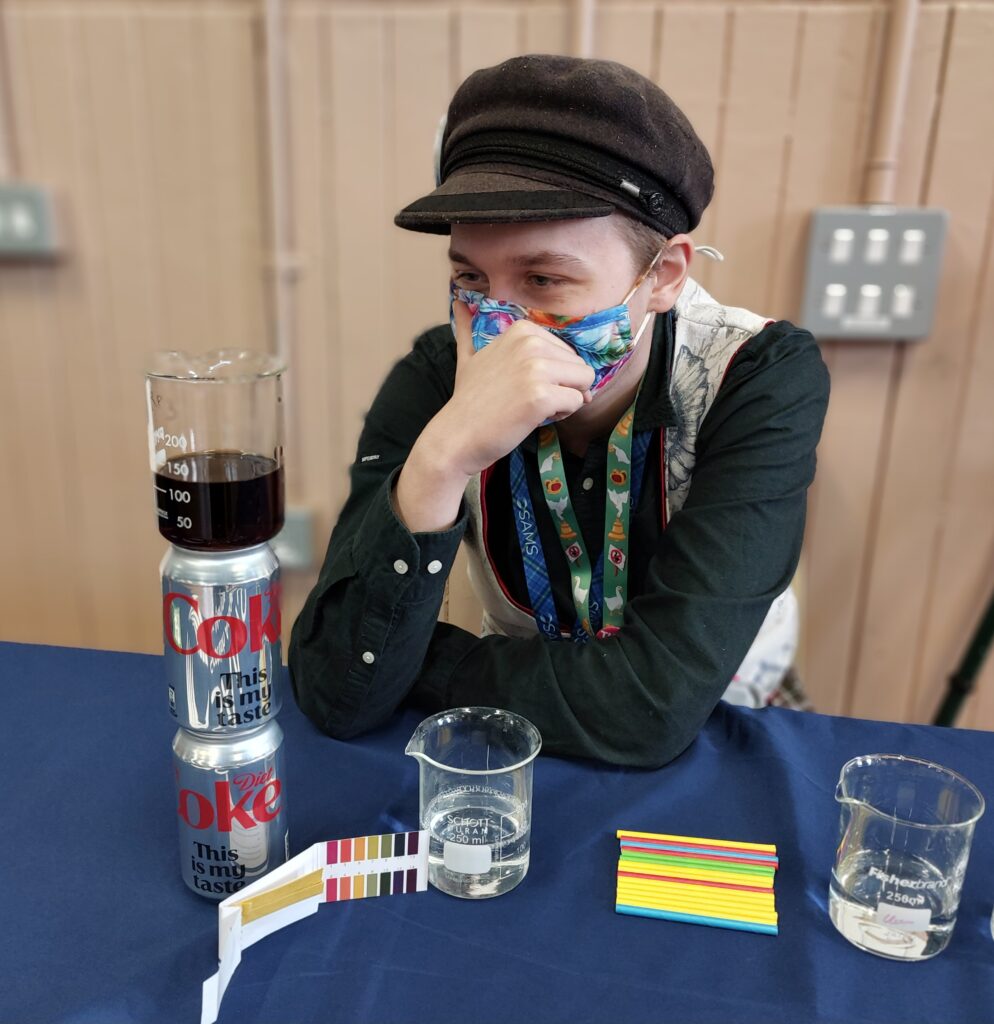
How were your first few weeks settling in at SAMS?
It’s been a whirlwind! From planning experiments to reading literature to doing induction training in Inverness, I’ve had so many opportunities so quickly to really throw myself in. My supervisors are all fantastic, and they’ve really helped make sure I feel like a researcher and not a school child. I’ve already learned so much about the life of a researcher in marine science, given I’m now living it! It’s hard work – but it is fun, and there are plenty of ways to get your mind off work at SAMS. With Dunstaffnage Castle right beside us on site and the new UHI Knitting Club having started at SAMS, it’s easy to take a break before jumping back into your work again!
What has been your favourite thing so far about being at SAMS as a postgraduate student?
It’s definitely how tight-knit and diverse the SAMS community is. The researchers, both staff and student, have come from all over the world to end up working here, and it’s wonderful to interact with and learn about everybody. I’ve loved telling my international peers about Scotland (and occasionally translating some Scots that they didn’t know), and everyone is so keen to share their culture with everyone else. I came back to my desk after being sick one day to see one of my supervisors had left me a chocolate bar as a Diwali gift – that was really nice.
What advice would you give to someone considering an MRes in Marine Science at SAMS, UHI?
It is worth coming here to study at a postgraduate level. The lab facilities are amazing, and SAMS has so many industry connections and outreach opportunities for you to utilise as well. SAMS is in a rural location though – keep in mind that the buses, while still reliable, don’t run as often as they do in a big city like Edinburgh or Glasgow. It’s also a really good idea to be involved with the community too – it’s easy to volunteer, and there are loads of activities at the Rockfield Community Centre or at the Corran Halls for people to attend and be involved in. With week-long events like the Mod (a Gaelic language celebration) and the Oban Winter Festival, there is always something to see and be involved in!
And finally, do you have a favourite marine creature?!
Of course I do – my favourite marine creatures are harbour seals! They’re so cute, and the Scottish folklore surrounding them and selkies fascinate me. It saddens me deeply that I’ll never pet one, but I can only hope that one day a seal will decide I’m interesting and come check me out. They are so intelligent as well – how could anyone not love them?
To find out more about marine science courses at SAMS, a partner of UHI, visit www.sams.ac.uk/study.
Recent Post
Student Focus – Artemis Eales: MRes Marine
- 18 December 2024
- 6 min read
Student Focus – Evie Whyte, MSc Algal
- 9 May 2024
- 5 min read
Field Trip Reflection: A First-Year’s Experience of
- 2 May 2024
- 5 min read



